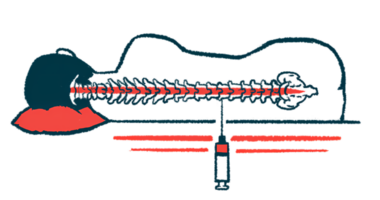Neural Stem Cell Therapy for MS Tolerated Well in Small Phase 1 Study
12 people with progressive MS were treated with one of four doses of NPC therapy

A treatment containing neural stem cells derived from a human fetus was shown to be well tolerated in a small clinical trial of people with progressive forms of multiple sclerosis (MS).
Results showed some promising effects on markers of inflammation and brain atrophy. Researchers said these preliminary findings “warrant future clinical studies with the highest dose of cells in a larger [group] of patients.”
The study, “Neural stem cell transplantation in patients with progressive multiple sclerosis: an open-label, phase 1 study,” was published in Nature Medicine.
While there are more than a dozen disease-modifying therapies approved to treat relapsing types of multiple sclerosis, there are far fewer options for progressive forms of the disease.
Progressive MS, which includes primary progressive (PPMS) and secondary progressive MS (SPMS), is marked by symptoms that gradually worsen over time, driven by the gradual damage and death of nerve cells in the central nervous system (the brain and spinal cord).
Neural stem/precursor cells, or NPCs, are specialized stem cells able to mature into neurons (nerve cells) and other types of cells in the central nervous system. In addition to differentiating into new cells, NPCs can secrete signaling molecules that improve the health of nearby cells.
A number of preclinical studies in MS models have shown that transplanting NPCs into the brain can be beneficial, with cells traveling to damaged regions and promoting functional improvements.
Testing neural stem cell therapy in PPMS, SPMS
Scientists at San Raffaele Scientific Institute in Milan, Italy, conducted a small, first-in-human Phase 1 clinical trial, called STEMS (NCT03269071), to test NPC therapy in people with progressive forms of MS.
In the study, 12 people with progressive MS — seven with PPMS, five with SPMS — were treated with one of four doses of NPC therapy, ranging from 0.7 million to 5.7 million viable cells per kilogram of body weight.
The NPCs were derived from a single human fetus. The cells were expanded in a lab and then administered to patients through an intrathecal injection, which delivers the cells through the spine into the cerebrospinal fluid (CSF) that surrounds the brain and spinal cord.
Before the NPCs were injected, patients were given corticosteroids and other immune-suppressing medications to prevent an abnormal immune reaction. Preventive therapies against infection were also administered and patients were closely monitored for two weeks after the treatment, with regular follow-ups for about two years (96 weeks).
The study’s main goal was to assess the safety of NPC treatment and results were generally positive. There were no notable acute complications related to the treatment, though many patients reported mild headache and neck stiffness, which are common with intrathecal injections. Infection and constipation were sporadically reported, but it wasn’t clear if these were related to treatment.
“The primary outcome — safety — was reached with no severe adverse reactions related to the cell product at 2-year follow-up,” the researchers wrote.
Comparisons of CSF samples collected at the treatment and three months later showed levels of several inflammatory proteins in the CSF decreased after treatment and levels of anti-inflammatory molecules and signaling molecules that promote nerve cell health increased.
The changes in CSF biomarkers suggest NPC treatment “might have played a neuroprotective role” in these patients, said the researchers, who noted the study is limited by its small size and most patients were on other treatments that may have influenced the results.
Later MRI assessments generally did not show any unexpected findings. Over two years of follow-up, half the patients developed new disease lesions. The researchers noted that the number and volume of new lesions showed no association with the number of injected NPCs, but higher-dosed patients had a significantly lower rate of brain atrophy (the gradual reduction in total brain volume) over the two years.
Comparing the four years before NPC treatment with the two years after it, the rate of progression on clinical measures of disability, such as the expanded disability status scale (EDSS), was not significantly different. The researchers emphasized the study is probably too small to detect statistically meaningful effects on disability.
“Although preliminary, these results support the rationale and value of future clinical studies with the highest dose of [human fetal NPCs] in a larger cohort of patients,” they said.







